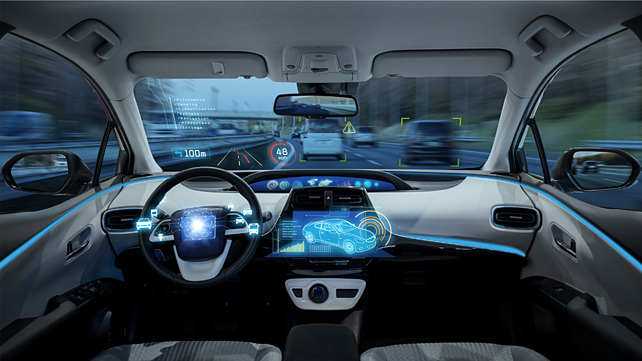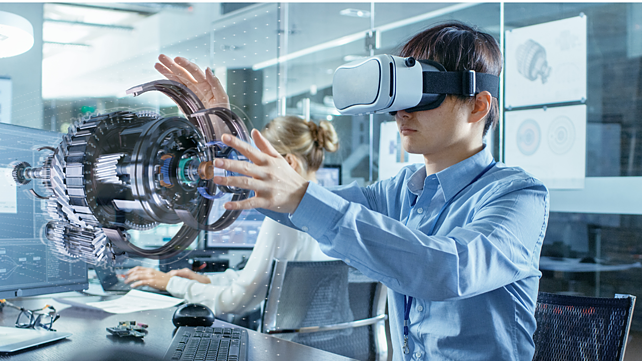
As the Area Vice President – India and South Asia Pacific at Ansys, Rafiq Somani is responsible for driving the growth for the company across key verticals such as automotive, industrial, aerospace and defence, consumer, infrastructure, to name a few. Earlier, he was with PTC as the Country Sales Manager since 1996. Prior to that, he had served three years with Tata Consultancy Services and for two years with Minicomp Computers.
What is Ansys’ contribution to the faster development of new systems in the automotive, aviation, and maritime industries?
Innovation is not just a buzzword— it is a critical competency needed to transform vehicles into smart machines that incorporate electronics for infotainment (phone, multimedia), guidance (GPS), and drive the machine itself. Most high-technology companies within the auto, aviation and maritime industry now realise the benefits of simulating early in the design cycle. It helps identify and solve design problems much more efficiently and cost-effectively.
Ansys is helping companies accelerate and scale their journey towards digital transformation (right from concept design to detailed design, manufacturing and operations), drive tighter collaboration among globally distributed teams, and increase productivity to create advanced products with more favourable environmental attributes at a lower cost.
Ansys is aiding the use of simulation right from microchip (component level) to sub-system, system, the system of systems and all the way to missions through integrated toolsets and workflows. Ansys has been helping companies to handle increasing product complexities and multiplying failure modes to keep vehicles, planes and ships robust, reliable and safe.
Can you give us some examples?
There are several examples of successful adoption in the aerospace and marine sectors. A start-up in space leveraged Ansys simulation to develop the capability to manufacture a new launch vehicle every 60 days via additive manufacturing technology, compared to one year of development time using traditional manufacturing methods. Predictive analytics leveraging Ansys simulation has already helped a single airline avoid 1,200 delays due to maintenance.
Ansys and the BMW group have created the industry’s first holistic simulation toolchain for developing autonomous vehicle (AV) technologies. The simulation toolchain will enable highly automated and autonomous driving (AD), with the first vehicle launch expected in just two years. The BMW Group is leveraging Ansys’ broad pervasive engineering simulation solutions and experience to speed up the development of a safety-focused solution for the validation of AD systems.

According to Grand View Research, the global simulation software market size is expected to reach $33.9 billion by 2028, growing at 17% CAGR. How do you see this growth favouring Ansys?
As per our internal assessment based on the study that we had done in 2019, the total addressable market for Ansys’ simulation would triple from $6.6 billion in 2018 to $15.8-20.6 billion by 2026.
The increase in addressable market opportunities will come with a new set of challenges that our customers will face. Challenges will include reducing cost, accelerating innovation and design. For example, the development of autonomous cars is not possible without the use of simulation. Ansys has the range of tools and the required expertise to help autonomous cars and developers address this challenge.

What are the new opportunities that you see in the next five years?
Industries are evolving due to the changes in technologies such as electrification, autonomy, Industrial IoT, and 5G. We see a large and growing customer investment in these trends driven by unprecedented product complexities. Simulation is and will be playing a key role in these technology trends.
Within electrification, simulation solutions will have to address power electronics, electric machines, battery & BMS, and electric propulsion system. Customers globally have been using Ansys to accelerate the design and innovation of electric vehicles.
Within autonomy, a range of challenges will have to be addressed before the autonomous cars are launched. Cars will require rigorous testing – running it for billions of miles to show performance across real-world scenarios. The cost of ADAS and AV sensors and software will need to be decreased to make it affordable for consumers. AVs will need billions of lines of codes. Ansys has solutions to address these complexities.
Similarly, Industrial IoT and 5G are other significant opportunities that will drive growth. Within Industrial IoT, Digital twins have the potential to revolutionise how manufacturers do business in industries like oil & gas, automotive, and aerospace & defence. The 5G technology will enable Industrial IoT, digital twins, support AVs, and democratise healthcare and real-time patient monitoring. Ansys’ simulation is being deployed across the globe to deliver on these disruptions.
Is there a cross-pollination of ideas to automotive from the role played by Ansys on the First Flight Attempt on Mars? If so, what are they?
For long, the aerospace & defence industry has been a pioneer in technology breakthrough. Automotive and other sectors have also been quick to adopt these technologies. The aerospace industry has been leveraging new and innovative technology to make their products cheaper, faster and safer.
Few examples of technologies that other industries adopted from aerospace include – (a) vehicle weight reduction through the use of composite and new materials (especially with EVs) to be more fuel-efficient; (b) communication and navigation technologies are getting more popular with the new autonomous focus, which was always there in space engineering, and (c) MBSE and system engineering were extensively used in aerospace, but an increase in software and controls has brought interest to automotive OEMs.

Is Ansys supporting the manufacturing sector in stimulating production and optimising the manufacturing/assembly lines?
Yes, supporting the manufacturing sectors, be it conventional subtractive manufacturing processes like machining, bending, forming, forging, or additive manufacturing process like 3D printing, are a part of Ansys’ pervasive simulation solution strategy. Computer-based simulation allows engineers to predict things like wrinkling, cracking and life of the manufactured products even without touching the material.
Ansys Additive Solutions, a comprehensive and scalable software solution, allows designers to minimise risk and ensure high quality, certifiable parts. It allows to dive deeper into the properties of 3D printer parts, ensure traceability of manufacturing data, optimise build-files and more.
Ansys’ unified simulation platform leverages the parametric and persistent power of software engineering for Multiphysics analyses, so engineers can efficiently explore, understand, and optimise the design and manufacturing process, which fit well for Industry 4.0 digital factory framework.
Share of electronics has been increasing warranting stringent testing norms. How can Ansys pitch in helping customers mitigate emerging challenges?
Increasing electronics poses exponential challenges in performance validation and safety. It is making EMI-compliant design significantly more challenging. Electrified powertrains, sensors, auxiliary electronics and sophisticated infotainment systems pose complex interaction of electromagnetic waves at all frequencies from kHz to GHz. The use of simulation to predict EMI-EMC is becoming prominent today. These simulations are used as pre-compliance tools.
Despite advancement in simulation, recalls by OEMs have not come down. Why?
We must understand that an automobile is a complex system of several sub-systems. Each sub-system is made of several components. The cohesive interaction between the components and sub-systems makes the system work flawlessly. Each component development has its own challenges in terms of the physics behind its operation, materials being used, the control logic that controls it, etc.
This leads to several smaller teams working on different components, and often it leads to silos. A component might be designed and analysed for its working independently, but at a system level, its operation will not be analysed completely. Model Based System Engineering is our answer to overcome such challenges. We are working with industry leaders to address this topic.
Often, when the analysis of the product happens at the system level, the characteristics of the physics are not fully considered. We believe solutions like digital twin will help in analysing the sub-system and the system better and help predict potential defects in the field and thus address field recalls.
In a nutshell, more use of simulation technology will help to reduce field recalls. Today, simulation is primarily used in the design & analysis of components. Product development involves other aspects like ideation, manufacturing, and field maintenance apart from design. We believe in and strive to enable customers to use simulation in all aspects of product development and avoid defective products getting into the field.
What are your plans for India?
India is not isolated to the technology trends discussed above. We continue to focus on those for the Indian market as well. Electric vehicles have seen significant activity in the Indian market. Ansys has been working with a range of customers (OEMs, suppliers, start-ups) to accelerate electric vehicle design and innovation. Through our collaboration with academics and research institutions, we are helping to build an ecosystem to make India a leading EV developer in the world.
The recent changes in the policies by the Indian government (e.g., focus on self-reliant India) have further strengthened our go-to-market strategy to enable local companies to innovate and design in India.